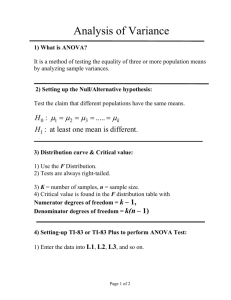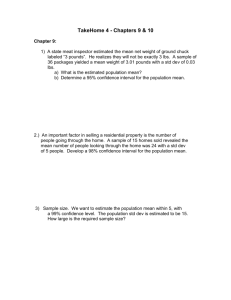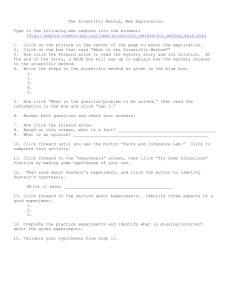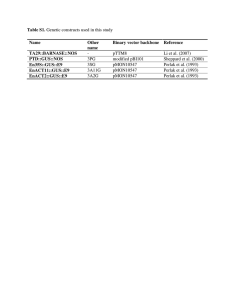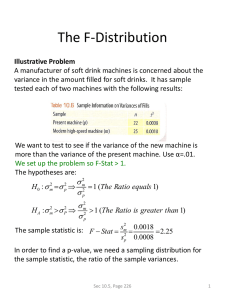How to Perform an ANOVA Test on a TI-83 or TI
advertisement
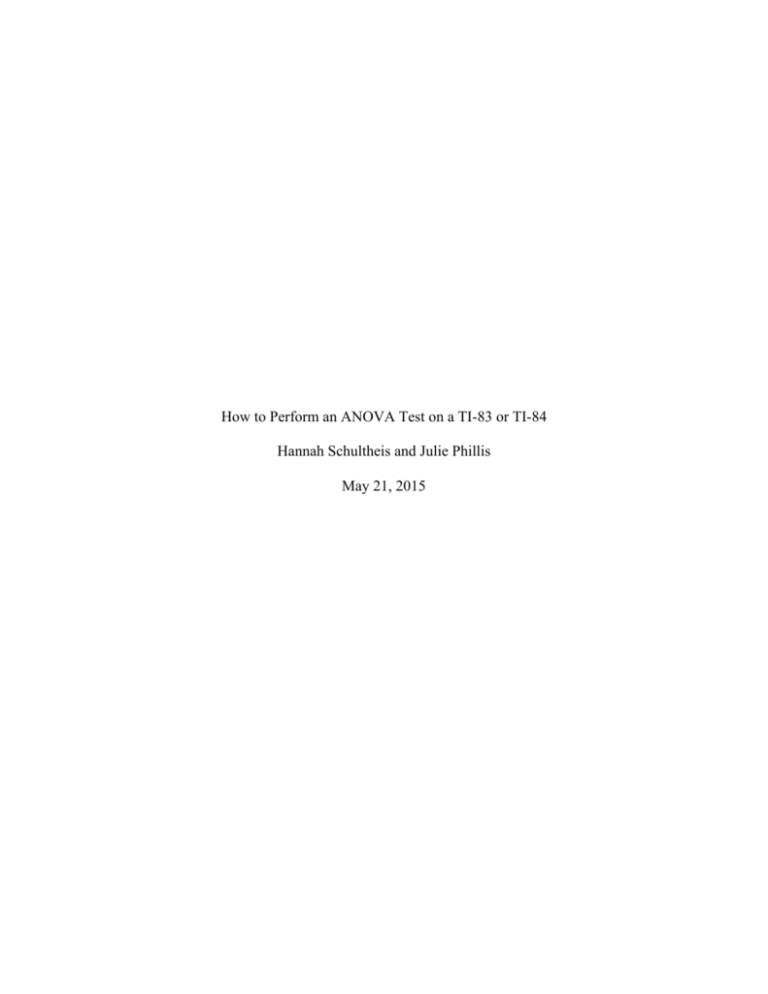
How to Perform an ANOVA Test on a TI-83 or TI-84 Hannah Schultheis and Julie Phillis May 21, 2015 An ANOVA, or, Analysis Of Variance test, is used to determine if there is a significant difference between the means of n number of groups where n >2. To begin, you must first create a null and alternate hypothesis. The null hypothesis claims there is no difference between the means of the data sets and they are all equal. The alternate, however, is the hypothesis we believe to be true and which we are trying to find evidence in favor of, which is that there is a significant difference between the means of each data set. Example: The National Transportation Safety Board (NTSB) wants to look at the safety of three different car sizes. They collect data from three different sizes of cars. Using the data below, determine whether the mean pressure applied to the driver's head during a crash is equal for each type of car. Determine at α=.05 and α=.01 Compact Cars Midsize Cars Full-Size Cars 643 469 484 655 427 456 702 525 402 To perform this test on a TI-83 or a TI-84 calculator, you must first enter each set of data into it’s own list. To do so, you click the “STAT” button and then select the “Edit...” option. Once all of the numerical values have been entered into the list, press the “STAT” button and tab over to the third tab titled, “TESTS.” Go all the way to the bottom of this page to the entry titled, “ANOVA(“ and select this by pushing the enter button. Then enter the list numbers by pushing the “2ND” button, then the 1 button, followed by a comma, followed by “2ND” and the 2 button, followed by a comma, and lastly followed by “2ND” and the 3 button. This step must be altered if you enter more than three sets of data into your calculator. In this case you must also select the additional data lists. Click “ENTER” and the results of the ANOVA test will magically appear on the screen before you. The only two values you are concerned with are the F-Value and the p-Value; these are the first two numbers on the results page. For this example the F-Value is 25.175 and the p-Value is 0.0012. Now that those two values are determined you have to compare the p-Value to the alpha levels 0.05 and 0.01. Since the p-Value for the example is smaller than 0.01 it is estimated that there is significant evidence to accept the alternate hypothesis that says there is a significant difference in means. Had the p-Value been smaller than 0.05, but greater than 0.01 we would accept the alternate hypothesis with strong evidence. When the ANOVA test gives you a p-Value that is greater than both 0.05 and 0.01 the alternate hypothesis is to be rejected. Happy learning!






